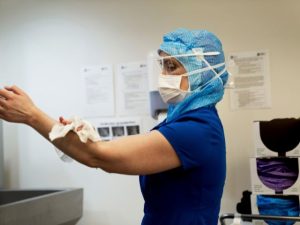The QSEN Competencies
Because your role as an RN in quality and safety can significantly impact patient care, strive to grow your practice with these 6 QSEN competencies:
Patient-Centered Care
The patient and their family are integral partners of the care team. Once they are aware of that, they can feel empowered to participate in the plan of care. Each patient should be treated and cared for holistically, where we consider and respect their preferences, values, and needs (physiological, mental, psychosocial, spiritual, and cultural).
Teamwork and Collaboration
Your teammates include the patient, their family, doctors, certified nurse aides (CNA), other healthcare providers, management, housekeeping, pharmacy, etc. Everyone contributes to improving the quality of patient care. Respect and communication between you and your teammates are essential to treating patients comprehensively.
Safety
It is fundamental to protect patients and decrease their risk of harm or injury. Everyone is responsible for the patient’s safety – from the patient to you and everyone else in between. As soon as you recognize a safety issue, it is your responsibility to address it.
Evidence-Based Practice
Along with your clinical expertise and patients’ preferences, the use of sound clinical evidence from peer-reviewed research serves as the basis for your nursing practice. You can stay up to date with new and updated protocols for patient care by evaluating different peer-reviewed research studies.
Quality Improvement
Nurses use an ongoing, methodical process (e.g., Plan-Do-Study-Act) to improve their procedures and protocols for better patient care based on research and evidence.
Informatics
Informatics brings nursing and technology together. We use technology to manage and communicate a patient’s healthcare information, aid in making decisions, and reduce errors.









